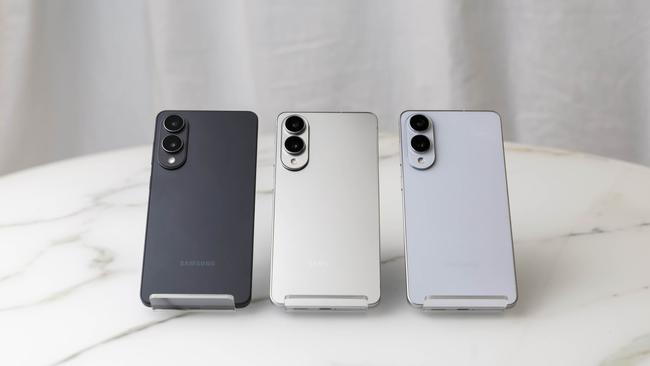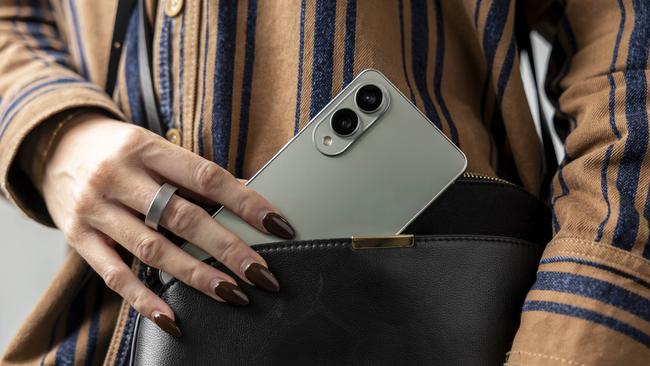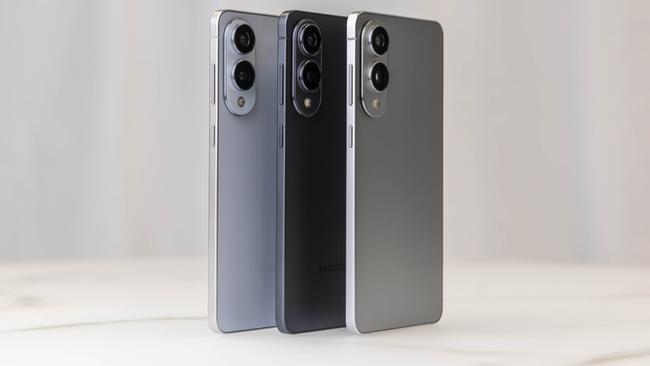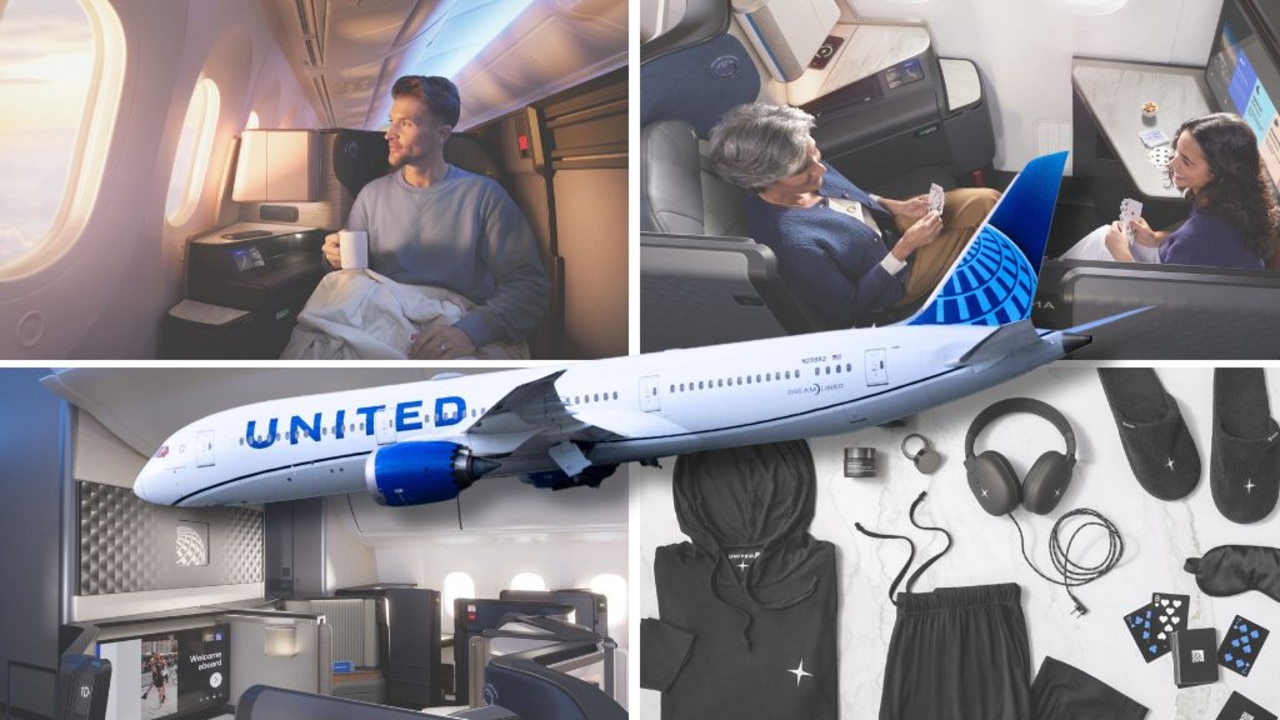Samsung unveils S25 Edge smartphone, which is ‘lighter than a packet of chips’
Samsung’s thinnest smartphone, the Galaxy S25 Edge, may be ‘lighter than a packet of chips’, but boasts the firepower and top AI features of its heftier devices.

Business
Don't miss out on the headlines from Business. Followed categories will be added to My News.
Samsung has unleashed its thinnest smartphone, the Galaxy S25 Edge, in Australia, saying it’s “lighter than a packet of chips” while boasting the firepower and top artificial intelligence features of its heftier devices.
The Edge – first unveiled as a teaser at the end of Galaxy S-series launch at San Jose in January – can be pre-ordered now, with general availability from May 30.
At quick glance, it looks similar to the S25, but there are a few key changes. Apart from being 5.8mm thin and weighing 163 grams, it doesn’t have as many cameras. It looks similar to the iPhone standard series, featuring two rear cameras. Including its front camera, it has three overall, two less than the S25 Ultra.
Samsung Australia head of product for smartphones, Nathan Rigger, said it still was equipped with the computational photography features as its other high-end phones via its 200MP wide and 12MP ultra-wide angle lenses.
“The 200MP wide lens is the same resolution we use in S25 Ultra,” Mr Rigger said.
“It provides unprecedented clarity and detail, so when you take a photo, you’re able to zoom in and crop those photos with less distortion than lower resolution cameras. It’s also equipped with what makes Galaxy cameras so popular, the ProVisual Engine to help a lot with a lot of that background processing and night-ography features as well, both in hardware and software, to ensure that you’re taking the perfect picture, both day and night.”
The 12MP ultra-wide lens can also be used for macrophotography, with a 3cm minimum focusing distance. It will be available in three colours: titanium silver and titanium jet black, via regular retailers, and Icyblue titanium on Samsung’s online store.
Mr Rigger said despite weighing “less than a packet of chips”, the Edge was also tough and designed to cater for the ‘case-less’ trend, featuring a titanium frame and Corning Gorilla Glass Ceramic 2 to protect the screen.

“Over the last few years, we’ve started to see a segment of the market that has really started to evolve … that prioritise (s) form over function, but don’t necessarily want no function or less function,” Mr Rigger said.
“And so the challenge sort of exists for us: how do we … make something ultra sleek, ultra modern without compromising on things that people expect from a flagship device. So with this device, what you’ll get is the perfect balance of premium performance, whether that be through camera, whether that be through chip set, whether that be through flagship AI features, and then also being able to get that into an ultrathin, ultra lightweight form factor as well.”
Samsung has designed thin new cases for the Edge, but Mr Rigger is anticipating many users will prefer to display the phone in its raw form.
“There’s definitely a trend toward using less cases. I think there will be a cohort who are going to go without a case because they enjoy the form factor.”
The Edge features a Snapdragon 8 Elite for Galaxy chip, the same as the S25 Ultra. It has a dynamic AMOLED display with a 120Hz refresh rate. Samsung said Edge’s battery life was designed to last all day, based on typical use.

The vapour cooling chamber – what’s used to dissipate heat and improve performance – is bigger than the S25 Plus. Mr Rigger said the phone was designed to sit between the S25 Plus and Ultra.
In regard to AI, the Edge features the same features as its S-series siblings. It is integrated with Google Gemini, allowing people to find more information about an object by taking a photo. This feature can also be used to generate recipes. For example, you can take a picture of the contents of your fridge and ask for meal ideas based on the ingredients you have.
Other AI features include Now Brief and Now Bar. Now Brief aims to provide users with “contextually relevant” briefings throughout the day – such as weather, meetings and best traffic routes – while Now Bar displays information on a locked screen based on what apps you are using. For example, Now Bar could show live sports scores, step by step navigation as well as the ability to control music playlists and other apps.
It also has AI-powered image and audio editing capabilities, including adjusting the volume of different sounds in a video clip and removing unwanted objects from a photo with a swipe of a finger. There is also a drawing assist tool to turn crummy sketches into more refined artwork.
“Galaxy S25 Edge is more than a slim smartphone. The superior engineering that brought this revolutionary smartphone to life illustrates a commitment to overcoming barriers that helps Galaxy deliver truly unexpected premium experiences for people around the world,” said TM Roh, president and acting head of Samsung’s device eXperience division at Samsung.
“S25 Edge not only marks a breakthrough for its category, but it also accelerates important innovation across the mobile industry.”
Pricing starts at $1849 for 256GB of memory and $2049 for the 512GB option.
Originally published as Samsung unveils S25 Edge smartphone, which is ‘lighter than a packet of chips’



